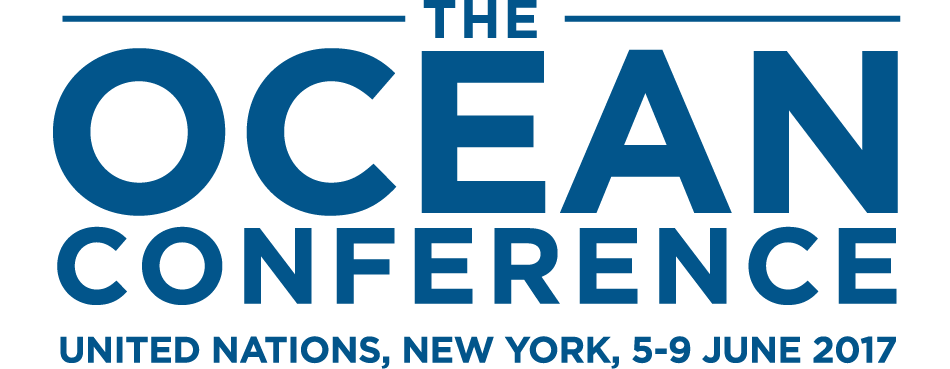Daily report for 10 July 2018
22nd Meeting of the Subsidiary Body on Scientific, Technical and Technological Advice (SBSTTA 22) and 2nd Meeting of the Subsidiary Body on Implementation (SBI 2) of the Convention on Biological Diversity (CBD)
On Tuesday, SBI 2 delegates engaged in discussions on:
- preparation for the follow up to the Strategic Plan for Biodiversity 2011-2020;
- a global multilateral benefit-sharing mechanism under the Nagoya Protocol;
- specialized international ABS instruments under Nagoya Protocol Article 4(4);
- resource mobilization;
- the financial mechanism; and
- capacity building, technical and scientific cooperation, and technology transfer.
Follow up to the Strategic Plan
The Secretariat introduced relevant documents (CBD/SBI/2/17, INF/26, INF/35, CBD/SBSTTA/21/INF/2/Rev.1, INF/3/Rev.1, INF/4/Rev.1, and INF/18/Rev.1).
CANADA, also for AUSTRALIA, NEW ZEALAND, SWITZERLAND, and JAPAN, called for a process based on transparency, fairness, and inclusiveness. He urged for expediting the first draft of the post-2020 framework, inviting technical inputs from experts, and developing a more concrete, practical, and effective roadmap. SWITZERLAND further emphasized integrating the other biodiversity-related conventions and all stakeholders to enhance synergies and support transformative change. MALAWI, with many, stressed actively engaging IPLCs and all stakeholders. JAMAICA called to engage non-traditional partners, including sectors driving biodiversity loss. ECUADOR stressed the need for participatory processes at all levels.
INDIA noted that the process should be flexible to adapt to new circumstances, and build on the existing Strategic Plan by developing few, specific, measurable, and realistic targets. CHINA said post-2020 goals should be limited and achievable. The EU called for launching a process to leverage voluntary biodiversity commitments, including from the private sector. NEW ZEALAND said NBSAPs should continue to play a crucial role. SOUTH AFRICA said there is merit in the UNFCCC approach of nationally determined contributions.
MEXICO called for an inclusive process, leading to a coherent plan with broad sectoral participation, and called for either a high-level panel or an informal advisory group to facilitate strategic planning. SWITZERLAND and PERU called for a high-level panel. EGYPT called for identifying “champions,” pointing to the role of cities in shaping the post-2020 framework. The REPUBLIC OF KOREA urged establishing indicators for the post-2020 framework upon its finalization.
NORWAY, the EU, SEYCHELLES, MOROCCO, and others said the framework should relate to the SDGs and make use of SDG-related indicators. NORWAY stressed that the process should: be innovative, flexible, and action-oriented; integrate the Protocols; and capitalize on the 2030 Sustainable Development Agenda, building political momentum. Tajikistan, for CEE, supported convening a high-level event on biodiversity at the UN General Assembly. PALESTINE stressed the importance of education.
Maldives, for SIDS, lamented limited progress on implementation, including the Samoa Pathway, calling for workshops to address SIDS’ special needs. NEPAL urged a greater emphasis on mountain ecosystems. JORDAN, YEMEN, and CAMBODIA stressed financial and technical challenges for implementing biodiversity targets. MOROCCO urged focusing on means of implementation, rather than on negotiating a new framework. Many called for strengthening regional consultation processes and regional workshops to exchange expertise.
The IIFB emphasized that IPLCs should participate in the proposed dialogue and global workshop, not just the regional workshops. GYBN cautioned against seeking a “Paris moment” for biodiversity, opining that the Paris Agreement on climate change is not sufficient. IUCN said a new mission is needed, which should be easy to communicate and incorporate a science-based target.
FAO stressed that the commitment of stakeholders will depend on whether the post-2020 framework is perceived as a joint agenda. WWF emphasized that the post-2020 framework should not interfere with existing global commitments on biodiversity loss. UNEP underscored lessons learned from other processes, especially on strengthening national commitments. BIRDLIFE INTERNATIONAL called for scientifically robust milestone goals to align with the SDGs, and for a simple, compelling communication narrative. FRIENDS OF NATURE, on behalf of many NGOs, expressed concern about focusing on large corporations, noting that IPLCs and smallholder farmers are the custodians of biodiversity. Discussions will continue in a Friends of the Chair group.
Global Multilateral Benefit-sharing Mechanism
The Secretariat introduced the relevant document (CBD/SBI/2/5). South Africa, for the AFRICAN GROUP, stressed that enough views and information have been gathered to enable an informed decision, and urged discussing the modalities of the mechanism. RWANDA called for the mechanism’s development for consideration by Nagoya Protocol COP/MOP 4, and emphasized that the mechanism should support bilateral benefit-sharing rather than replace it. SWITZERLAND pointed to lack of information on cases where prior informed consent (PIC) cannot be obtained and transboundary situations, highlighting it is premature to determine the need for a global mechanism. NORWAY emphasized it is too early to discuss modalities and, with MEXICO, called for an online forum to discuss the need for establishment of a multilateral mechanism. The EU stressed that discussions on the need for and modalities of a multilateral mechanism should not reopen discussions on the temporal and geographical scope of the Nagoya Protocol.
Many underscored the Protocol’s bilateral approach as the default approach to ABS. JAPAN noted that transboundary situations should be addressed under Article 11 (transboundary cooperation), while cases where it is not possible to obtain PIC, under Article 22 (capacity). INDIA said it had so far not encountered any case in which PIC could not be obtained or granted. ARGENTINA underscored the need to explore cases to be covered by the mechanism.
INDONESIA, VENEZUELA, and MOROCCO supported development of a mechanism for transboundary situations. ECUADOR and URUGUAY urged learning lessons from the ITPGRFA.
A contact group was established to continue discussions.
Specialized International ABS Instruments
The Secretariat introduced relevant documents (CBD/SBI/2/6 and INF/17), including recommendations and a study on criteria to identify a specialized international ABS instrument, and a possible process for its recognition. The EU and ECUADOR said more time is needed for full consideration. NORWAY, MEXICO, SWITZERLAND, and the EU stressed there should be no hierarchy between the Nagoya Protocol and other international instruments. INDIA and CHINA supported the proposed criteria. South Africa, for the AFRICAN GROUP, proposed that the criteria: reference provider countries and IPLCs; and apply legal certainty also on compliance. The EU stressed that the criteria should: allow responsiveness to new issues; not be adopted by the COP/MOP; and not be more stringent than what is required by Nagoya Protocol Article 4 (relationship with international agreements and instruments).
SWITZERLAND noted that the legitimacy to recognize specialized instruments lies with parties, calling, with ECUADOR, for consistency and mutual supportiveness. ARGENTINA urged caution when drawing lessons from other agreements, pointing to the revision process under the ITPGRFA. JAPAN proposed a study on how parties recognize specialized international ABS instruments in their national legislation.
The IIFB called for involving IPLC experts in the process. The ITPGRFA emphasized the mutually supportive implementation and close collaboration between the Treaty, the Convention, and the Nagoya Protocol. The WORLD HEALTH ORGANIZATION (WHO) drew attention to the Pandemic Influenza Preparedness framework and its robust benefit-sharing system.
Resource Mobilization
The Secretariat introduced relevant documents (CBD/SBI/2/7 and Add.1, 19, 20, INF/9, and INF/15). MOROCCO, SRI LANKA, PERU, South Africa for the AFRICAN GROUP, and others requested continuous and extended support through the Biodiversity Finance Initiative (BIOFIN). The AFRICAN GROUP stressed that financial reporting is a complex process that requires capacity building. NORWAY and MEXICO urged recognition of the OECD’s work on positive incentives for biodiversity finance. NEW ZEALAND stressed the need to eliminate subsidies harmful to biodiversity.
The EU stressed the importance of reporting on resource mobilization efforts, and emphasized domestic resource mobilization. AUSTRALIA noted challenges in streamlining reporting in countries with subnational jurisdictions.
MEXICO urged including more actors and new funding sources in resource mobilization efforts under the post-2020 framework, including from the financial sector. CANADA stressed a more important role for the private sector in resource mobilization. Madagascar, for SIDS, focused on financial gaps and innovative ways to finance biodiversity needs.
INDIA welcomed the review of the Rio marker for biodiversity to better align reporting of biodiversity-related development finance with recent CBD developments.
The IIFB called for the inclusion of IPLCs in the identification of funding needs, gaps, and priorities. The GLOBAL FOREST COALITION and the ICCA CONSORTIUM stressed that effective implementation of Aichi Target 3 (perverse incentives) is a precondition for effective implementation of the CBD. A CRP will be prepared.
Financial Mechanism
The Secretariat introduced relevant documents (CBD/SBI/2/8, 8/Add.1, and INF/25). Mark Zimsky, GEF, presented the GEF report. He highlighted that the biodiversity focal area is the biggest one in GEF 7, as well as a shift in prioritization during the last two GEF cycles, away from protected area management and towards biodiversity mainstreaming and improving biodiversity management in productive landscapes and seascapes. Many lauded the increased share of GEF funding for biodiversity.
Ethiopia, for the AFRICAN GROUP, requested a review of the GEF mechanism for resource allocation, so that parties have direct access and utilize resources with the help of implementing agencies. The Maldives, for SIDS, with the EU, lamented that the fifth review of the financial mechanism was not conducted due to lack of funding, with SIDS suggesting use of core funds if necessary. EGYPT and YEMEN suggested a proposal on funding arrangements for the post-2020 framework be considered by COP 14. JAMAICA emphasized leveraging other sources of finance, such as debt for nature swaps.
COLOMBIA requested strengthening synergies between the GEF and other financing mechanisms. INDIA called for exploring possibilities of funding from the Green Climate Fund for ecosystem-based climate change adaptation and disaster risk reduction and, with JAMAICA, stressed GEF programming should be aligned with national priorities. The IIFB, with SAINT LUCIA, urged requesting the GEF to update its policy on safeguards and engagement with IPLCs. A conference room paper will be prepared.
Capacity Building, Technical and Scientific Cooperation, and Technology Transfer
The Secretariat introduced relevant documents (CBD/SBI/2/9, INF/6, and INF/26). Antigua and Barbuda, for SIDS, Belarus, for CEE, and Cameroon, for the AFRICAN GROUP, stressed that the items under discussion are critical for implementation. Many drew attention to the Bio-Bridge Initiative as an efficient tool to promote and catalyze technical and scientific cooperation. AUSTRALIA and others said resources provided must be appropriate to national circumstances. JAPAN pointed to capacity-building support provided through the Japan Biodiversity Fund.
MOROCCO, the REPUBLIC OF KOREA, MEXICO, BOSNIA AND HERZEGOVINA, SOUTH AFRICA, and ECUADOR welcomed the proposal to establish an informal advisory committee on technical and scientific cooperation. VENEZUELA urged inclusion of an IPLC representative. NEW ZEALAND said that establishing the body requires further consideration. The EU and NORWAY preferred using the existing informal advisory committee to the Clearing-House Mechanism. NORWAY questioned the value of conducting an independent evaluation of the short-term action plan (2017-2020) at this stage.
The IIFB, supported by many, proposed a second online forum on achieving Aichi Target 18 (traditional knowledge). GYBN, with many, proposed acknowledging women and youth in the recommendations. IUCN emphasized the importance of gaining clarity on capacity-building needs.
In the Corridors
The pace of deliberations increased as the meeting addressed preparations for the post-2020 biodiversity framework, in addition to ABS- and finance-related matters. As views in the corridors diverged on a range of issues, including on whether to model the post-2020 framework on the Paris Agreement on climate change, one participant highlighted “we need to think outside the box” to get stronger buy-in for biodiversity conservation, further adding that “we need a broad, easy to communicate vision that links biodiversity to multiple sectors.” Following nitty-gritty discussions on a global multilateral benefit-sharing mechanism and the recognition of specialized international ABS instruments under the Nagoya Protocol, an experienced delegate pointed to a major challenge for biodiversity policy: “we need to think big and work out details, all at the same time.”
-->
Specific funding for coverage of the Ocean Conference - June 2017, has been provided by the
XXX, XXX, and XXX
-->
IISD Reporting Services is a division of the International Institute for Sustainable Development (IISD).
Earth Negotiations Bulletin (ENB), ENB+, and Knowledge Management for Sustainable Development
are branches within IISD Reporting Services.
© 1992-2018, IISD Reporting Services. All rights reserved.







